Khukuri, every Nepali household probably has one. History is something that is constantly rewritten, and Nepal’s history is no different. Yet, to this day, khukuri remains an enduring symbol of the brave Gorkhas, of Nepali valor in battlefields. It adorns many of our national emblems and insignias of security forces.
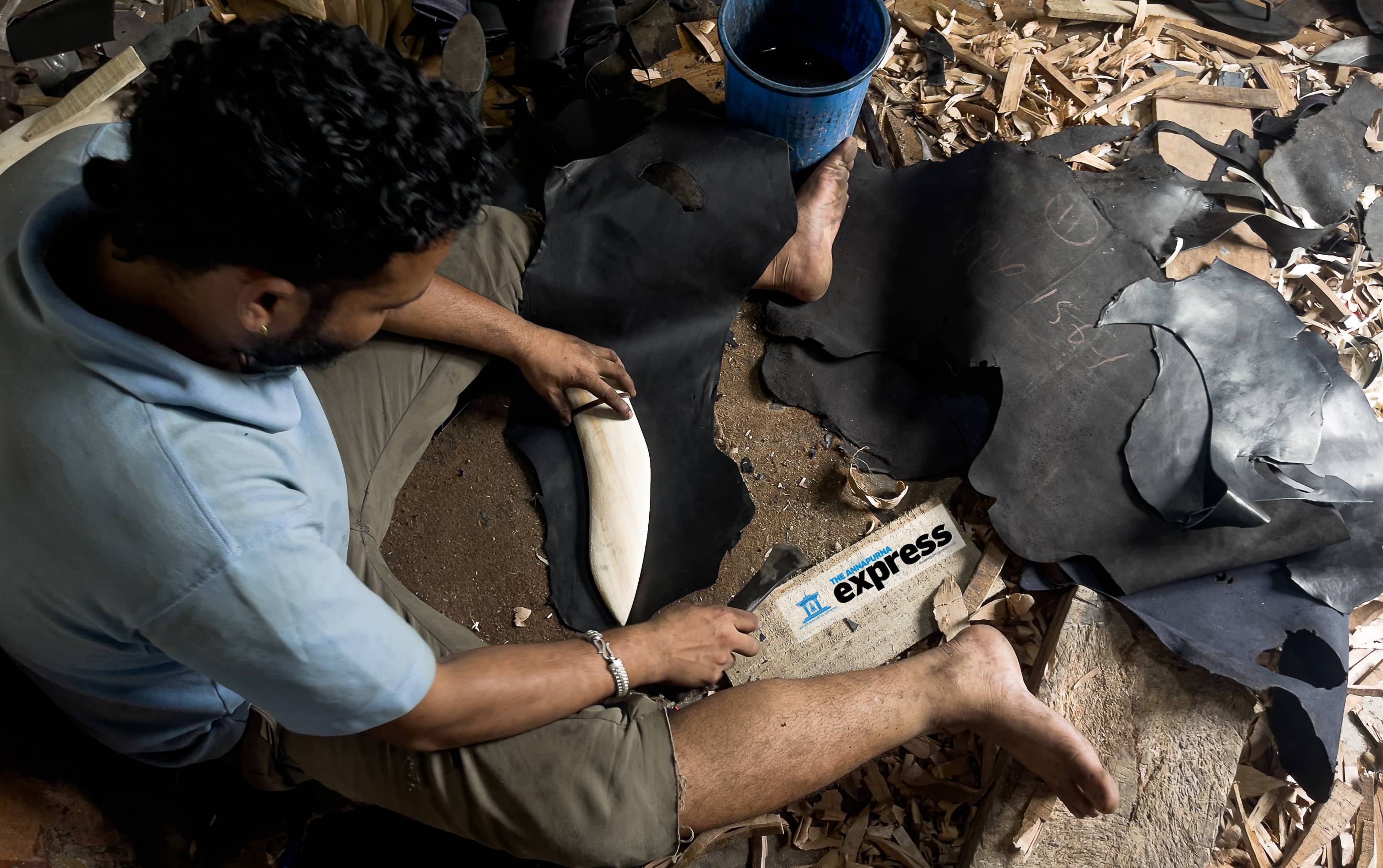
This week I visited Khukuri House Handicraft Industry Nepal (KHHI) at Patan Industrial Estate to learn more about the art of making the iconic knife. It has been forging and selling khukuris since 1991.

The process starts with priming of the metal. Gopal Limbu, general manager of KHHI, says only two metal types can be used to make authentic Nepali khukuris: 52100 (a carbon alloy steel) and 5160 (high carbon chromium spring steel).
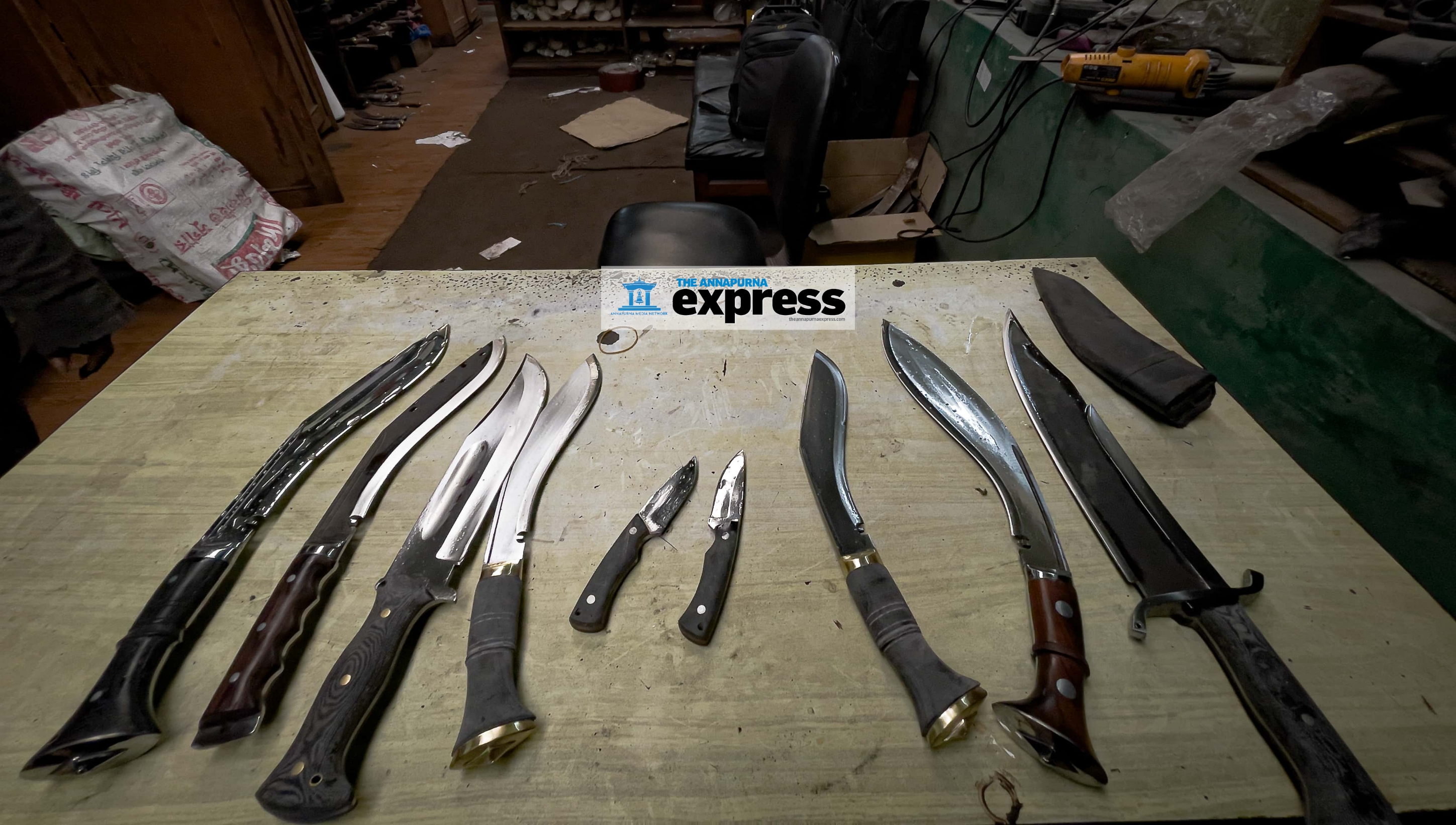
These metals are either imported from India or collected from scrap yards. “Suspension spring plates are ideal for making khukuris,” says Limbu.
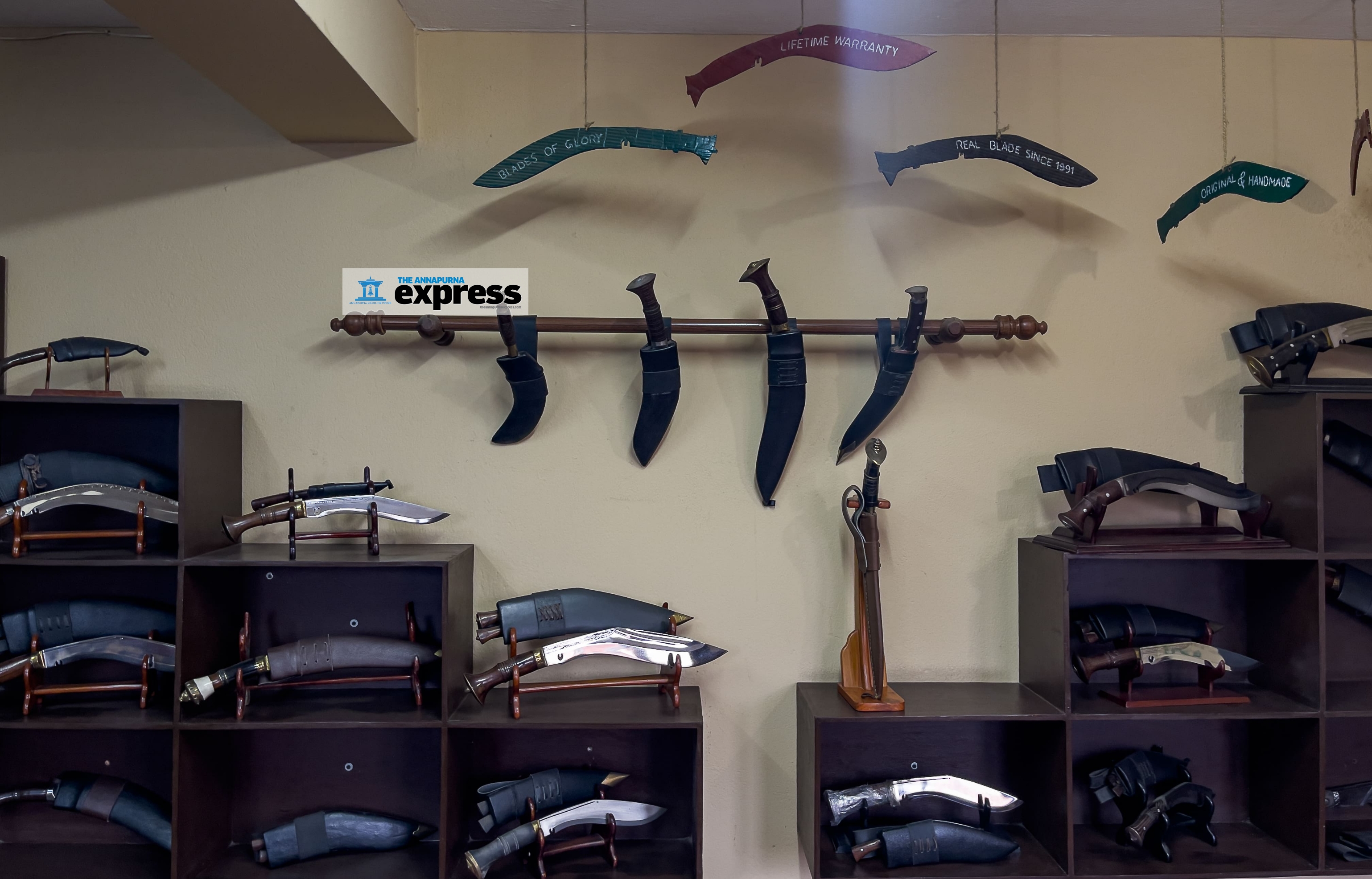
The metals are hammered and forged, which entails beating them under heat to give them the distinct khukuri shape. The blades are then quenched, whereby they are heated in a furnace, dipped in water and beaten repeatedly.
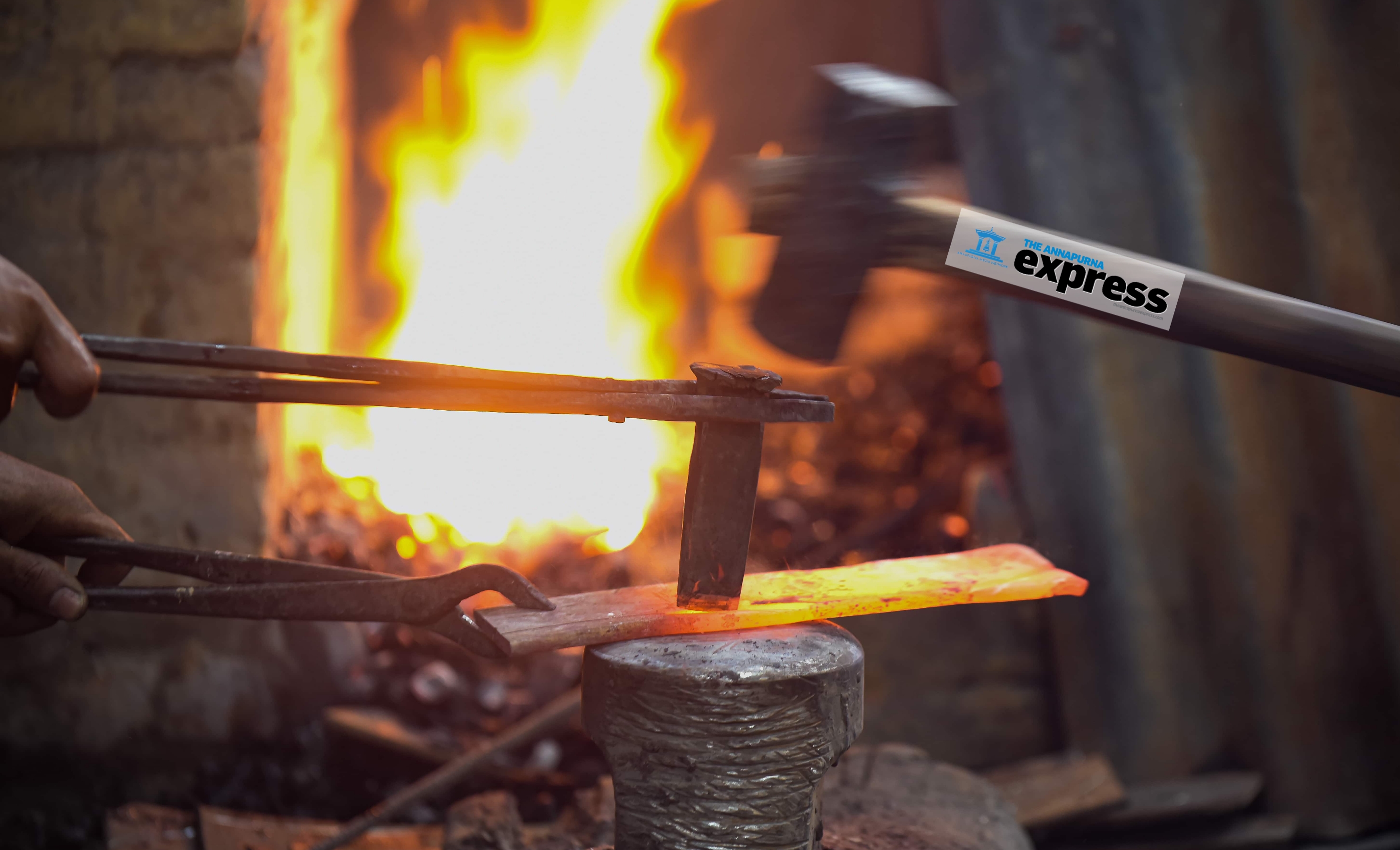
Quenching essentially improves metal’s performance. “It ensures the blade’s strength and quality,” says Limbu. Once the blades are ready they are sharpened and polished.
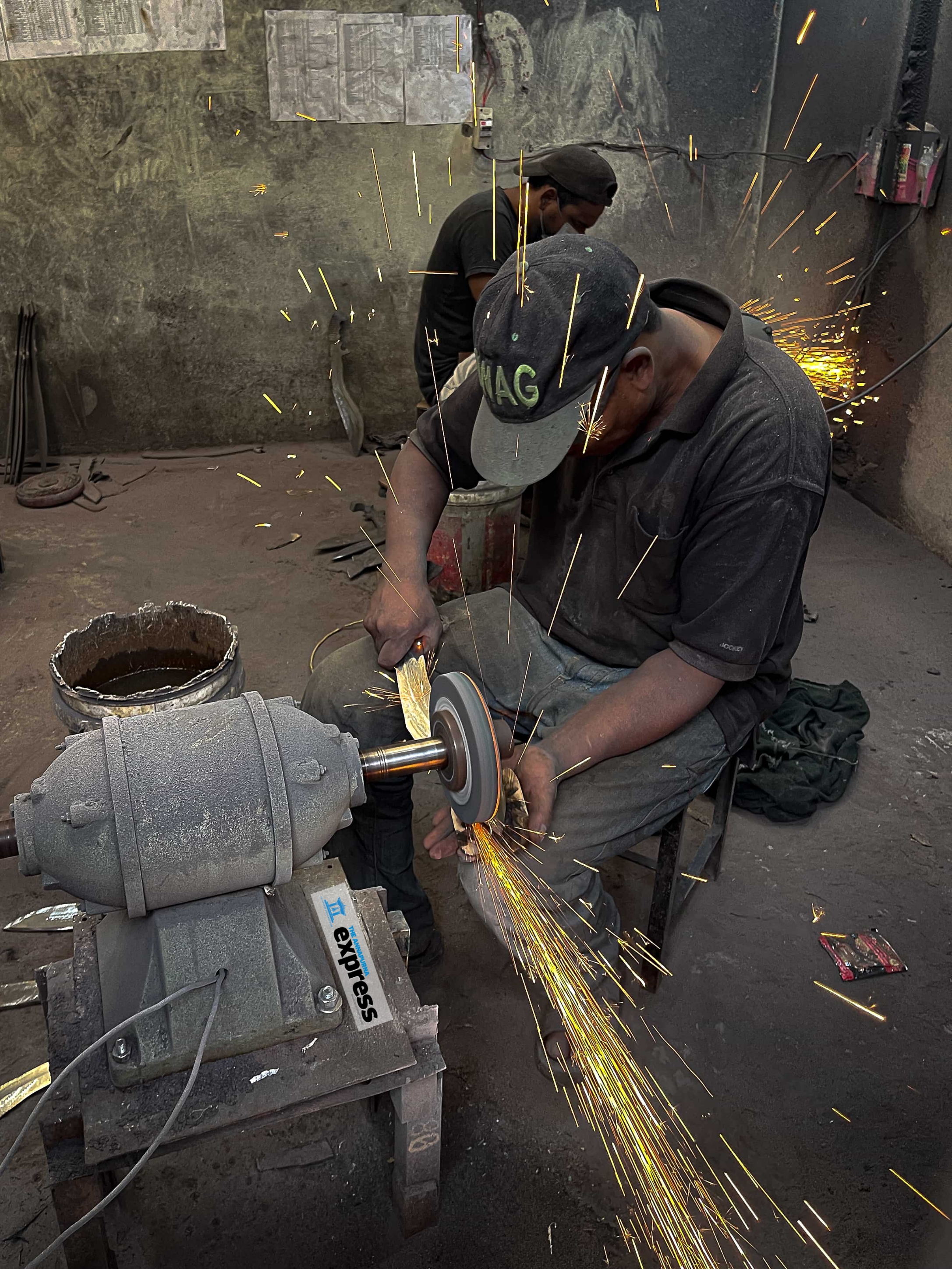
The blade’s sharpness is tested on buffalo horn, wood and paper. Each strike and slice should make a clean cut, without denting the blade.
Khukuris stand out for its distinct recurve shape, but they are of many kinds, as different as the regions of their origin in Nepal.
The differences, says Limbu, are discernible to khukuri enthusiasts, collectors and makers.
KHHI forges up to 200 khukuris of different kinds and sizes in a week. “Most of our khukuris are exported to the US and Europe,” says Limbu. “We also do commission work.”
The most expensive khukuri the factory ever made went for Rs 200,000.











